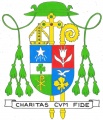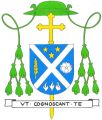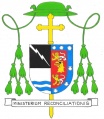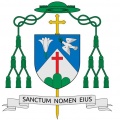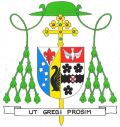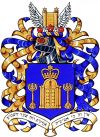Diocese of Thunder Bay: Difference between revisions
Knorrepoes (talk | contribs) m (Text replacement - "↵{{media}}" to " {{rel}} {{media1}}") |
Knorrepoes (talk | contribs) m (Text replacement - "{{religion}}" to "") |
||
| Line 1: | Line 1: | ||
''' {{uc:{{PAGENAME}}}} ''' (Dioecesis Sinus Tonitralis) | ''' {{uc:{{PAGENAME}}}} ''' (Dioecesis Sinus Tonitralis) | ||
Revision as of 16:25, 26 December 2022
DIOCESE OF THUNDER BAY (Dioecesis Sinus Tonitralis)
Country : Canada
Denomination : Roman Catholic
Established : 1952 as Diocese of Fort William
Renamed 1970 as Diocese of Thunder Bay
Official blazon
Origin/meaning
The cross is a Celtic cross, representing St. Patrick, the secondary patron of saint of the diocese. The lily and crown, representing Our Lady of Charity, the principal patron saint. The fortress, represents how the diocese was initially settled by the fur traders and also refers to the old name of Fort William.
The three eagle feather, represent the native community. The bases shows the Sleeping Giant and Lake Superior, well known geographic features of Thunder Bay.
The partition lines form another cross which connect all the symbols into a unified Diocese of Thunder Bay.
The mitre is the ornamental head dress which represents the office or dignity of the bishop. The colours represent the continents and the countries of the world where the people of the diocese originated: yellow for Asia, black for Africa, blue for Europe, green for Australia and red for the Americas.
Arms of Bishops of Fort William
Edward Quentin Jennings (1952-1969)
Arms of Bishops of Thunder Bay
Norman Joseph Gallagher (1970-1975)
John Aloysius O'Mara (1976-1994)
- No image
Frederick Bernard Henry (1995-1998)
Frederick Joseph Colli (1999-present)
This page is part of the Ecclesiastical heraldry portal
|
Catholic heraldry
|
Other Christian churches |
|
Literature: http://foreignembassy.blogspot.com/2010/05/diocese-of-thunder-bay.html

